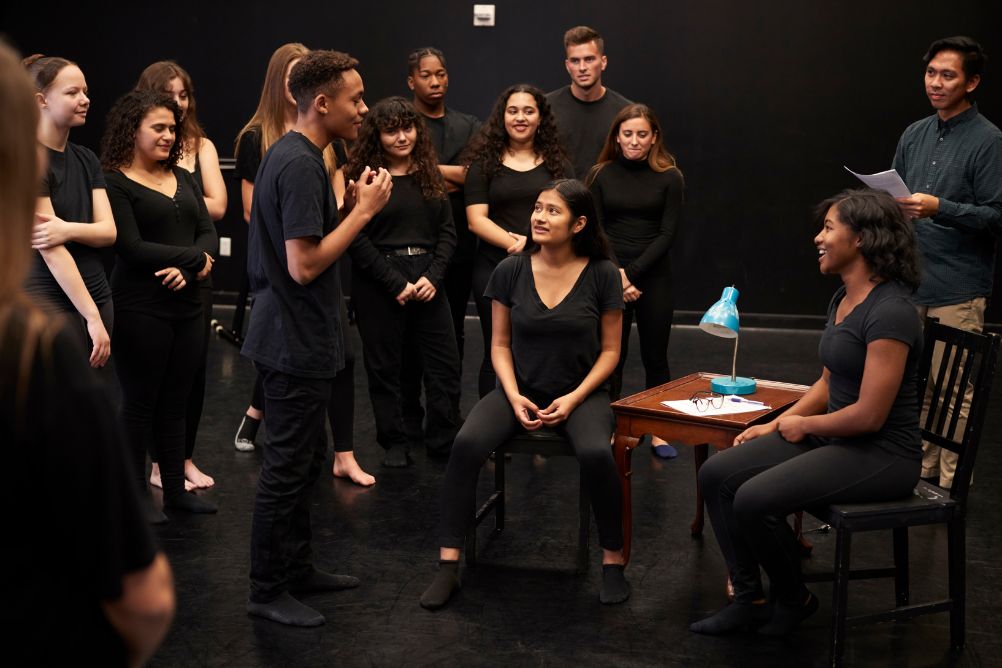When it comes to pursuing a career in acting, enrolling in a reputable acting school can be a crucial step towards honing your skills and gaining the necessary knowledge to excel in the industry. Canada is home to several renowned acting schools that offer a wide range of techniques to aspiring actors. In this blog post, we will explore some of the different techniques taught at Canadian acting schools, highlighting their unique approaches and benefits. Whether you are a local student or an international applicant looking to apply to Canadian acting schools, this article will provide valuable insights into the diverse training methods available.
MEISNER TECHNIQUE
The Meisner Technique, named after renowned American actor and acting teacher Sanford Meisner, is widely taught in Canadian acting schools. This technique emphasizes truthful and spontaneous reactions by focusing on listening, emotional connection, and living “in the moment.” Students learn to respond authentically to their scene partners, allowing for natural and organic performances.
STANISLAVSKI METHOD
The Stanislavski Method, also known as “Method Acting,” is another popular technique taught at Canadian acting schools. Developed by Konstantin Stanislavski, a Russian actor and director, this approach encourages actors to delve deep into their characters’ emotional and psychological aspects. Students learn to draw from personal experiences and emotions to create compelling and realistic performances.
VIEWPOINTS TECHNIQUE
The Viewpoints Technique, developed by Anne Bogart and Tina Landau, is an improvisational approach taught in Canadian acting schools. It focuses on the physicality and spatial awareness of actors, exploring different elements such as time, space, shape, and movement. Through this technique, students develop a heightened sense of ensemble work, collaboration, and creativity.
PHYSICAL THEATRE
Physical Theatre is a technique that combines elements of movement, dance, and theatricality. Many Canadian acting schools offer training in physical theatre, which emphasizes the body as a primary instrument of expression. Students learn to convey emotions, tell stories, and create characters through physicality, gestures, and non-verbal communication.
VOICE AND SPEECH TRAINING
Voice and speech training is an integral part of acting education in Canadian schools. This technique focuses on developing the actor’s vocal skills, including projection, articulation, intonation, and dialects. Students learn to control their voices effectively to bring life to their characters and communicate effectively on stage or in front of the camera.
IMPROVISATION
Improvisation, often taught as a separate technique or integrated into other training methods, plays a significant role in Canadian acting schools. Improvisational exercises enhance an actor’s spontaneity, creativity, and ability to think on their feet. It helps actors develop strong listening skills, adaptability, and the confidence to make bold choices in their performances.
Aspiring actors seeking to apply to Canadian acting schools have a wealth of techniques to explore and master. The Meisner Technique, Stanislavski Method, Viewpoints Technique, Physical Theatre, Voice and Speech Training, and Improvisation are just a few examples of the diverse training methods available. Each technique offers its own unique approach to developing an actor’s skills, allowing students to discover their strengths and develop a well-rounded acting repertoire. By immersing themselves in these techniques, aspiring actors can acquire the necessary tools to succeed in the competitive world of acting.
The wide range of techniques taught at Canadian acting schools provides students with valuable opportunities to grow as actors and expand their artistic horizons. Whether you prefer a more emotionally-driven approach or an emphasis on physicality and improvisation, there is a technique suited to your individual needs and aspirations.





